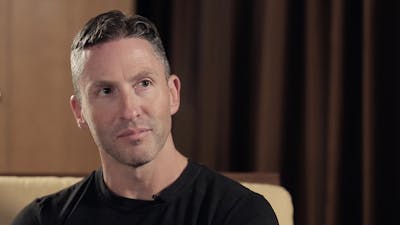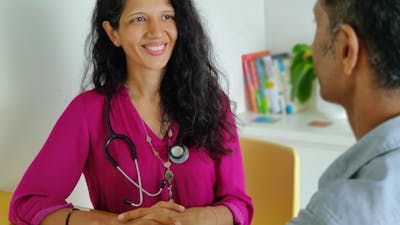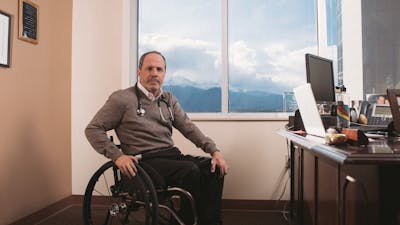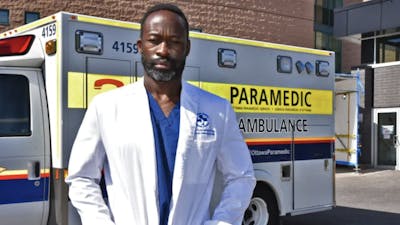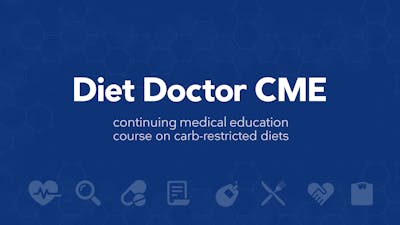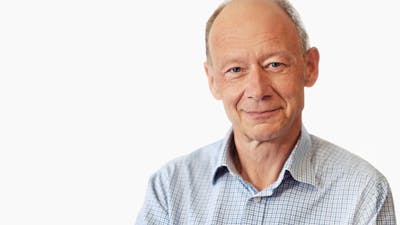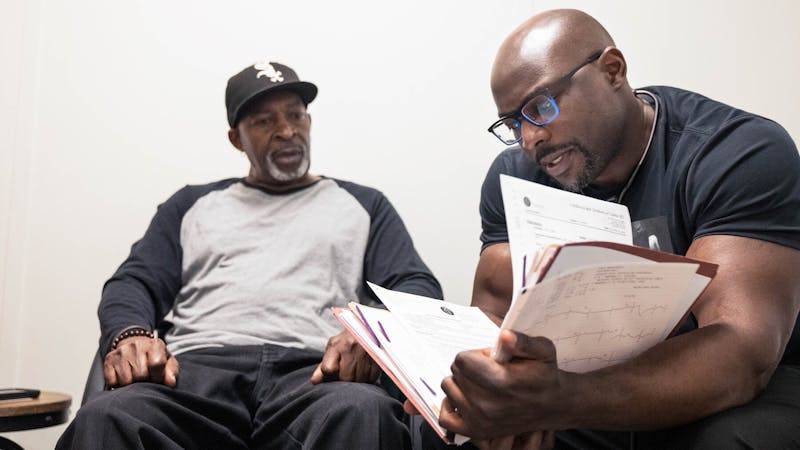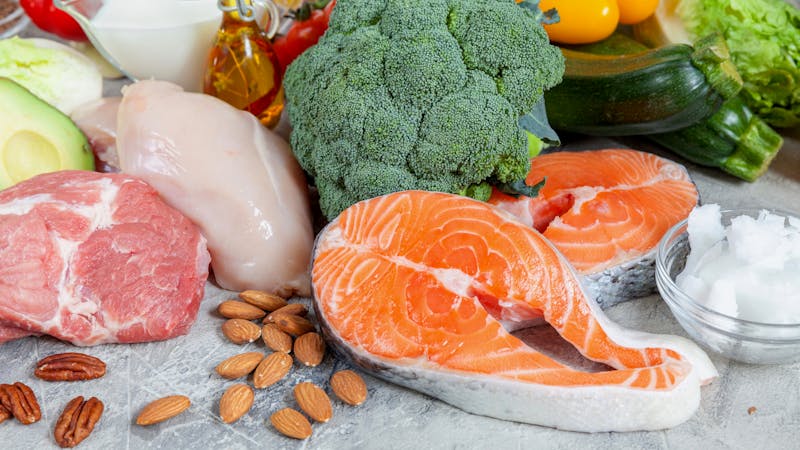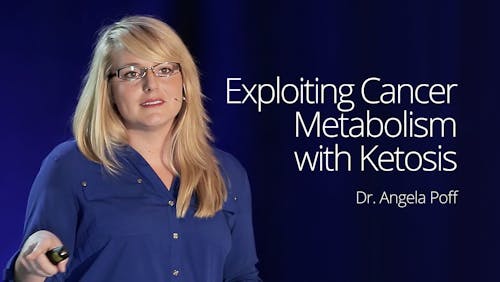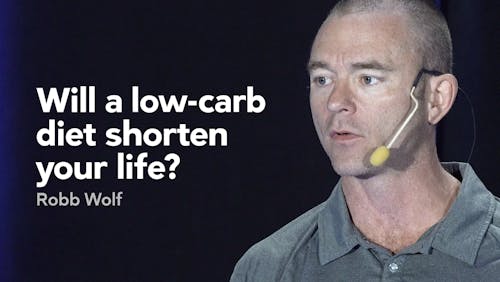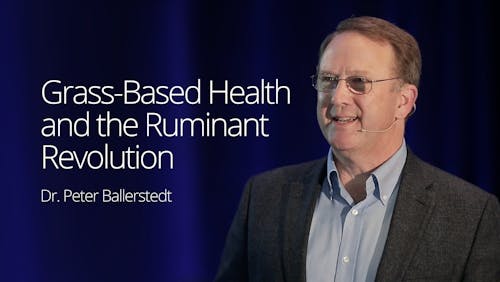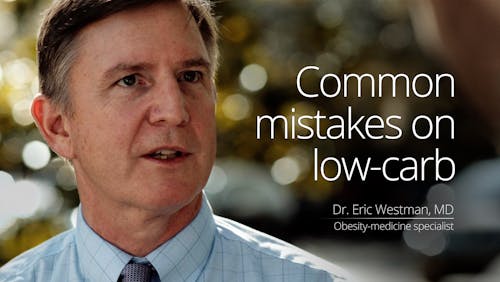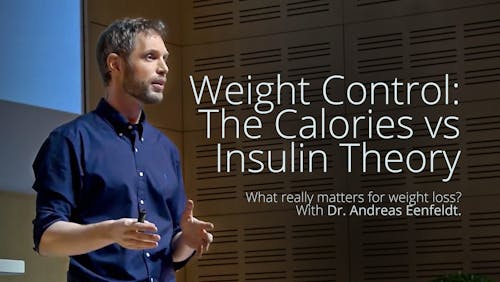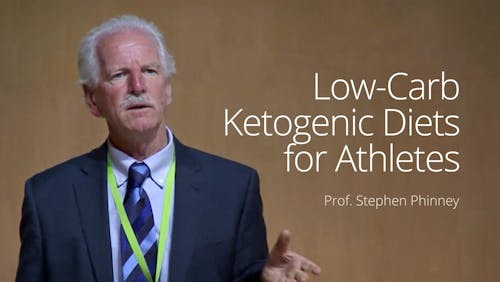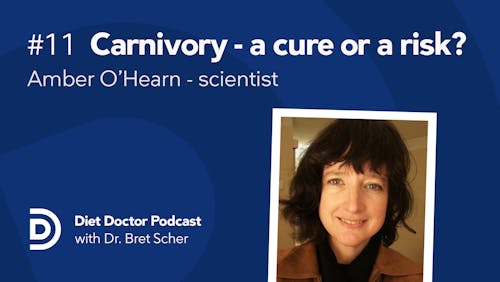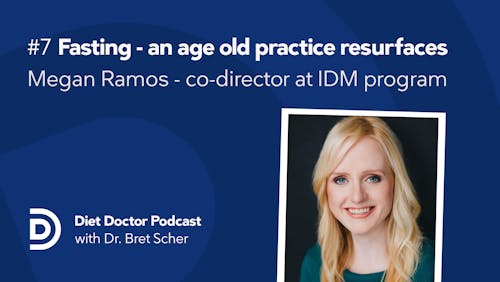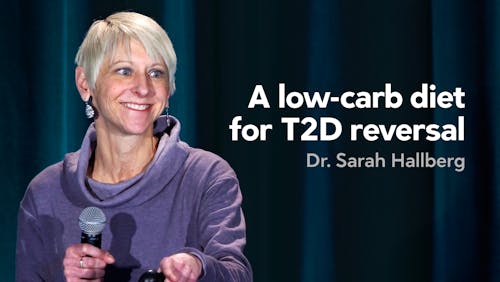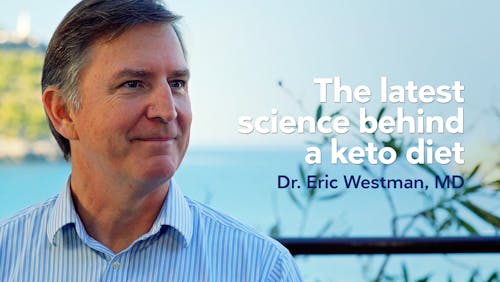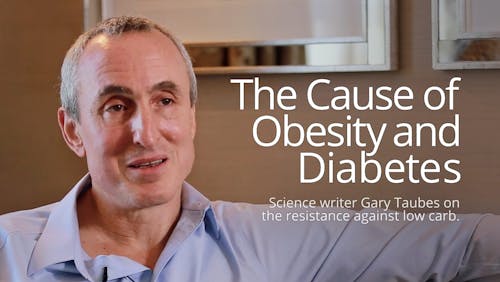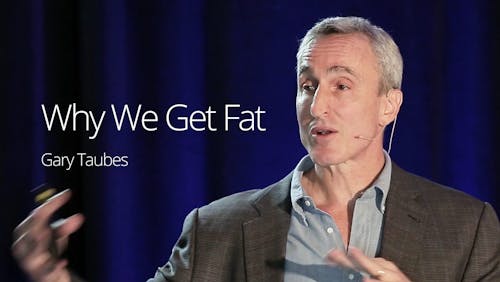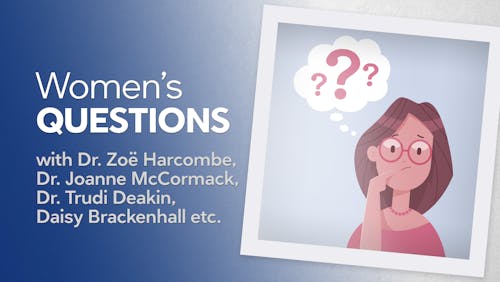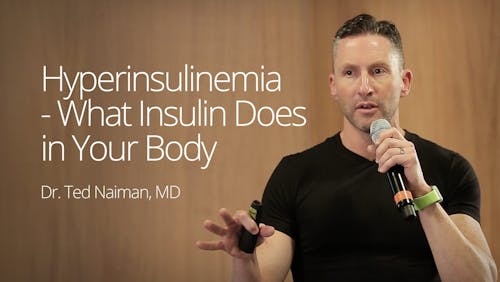Ophthalmologist recommends low carb for improved vision and health
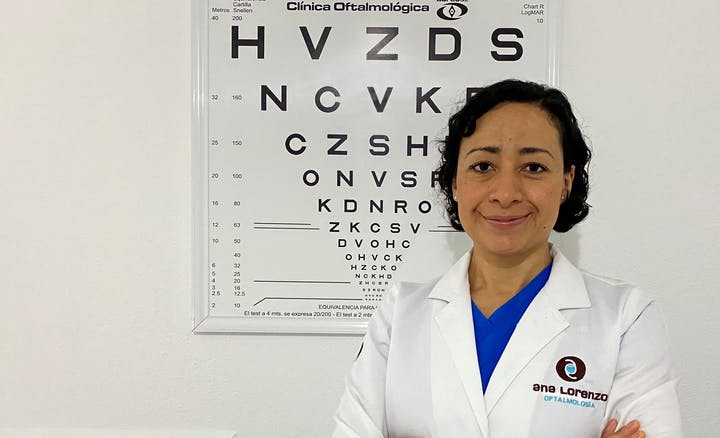
Photo by Karen Roman
As a specialist cataract surgeon in Mexico City, Dr. Ana Lorenzo is an expert in the delicate operation that removes the cloudy lens from a patient’s eye and replaces it with an intraocular lens for clearer vision.
As part of her post-surgical care, she always closely examines her patients’ retinas. She hopes she will find that she’s not too late to help them protect, and even improve, their vision. And a low-carb diet is one her favorite tools to help.
When she examines the thin layer of tissue at the back of the eye that is essential for vision, she is looking for evidence of diabetic retinopathy.
Chronically high blood sugar, as well as uncontrolled high blood pressure, damages the retina’s intricate blood vessels. Such diabetic damage is one of the leading causes of vision loss in the world.Research shows that people with diabetes are twice as likely to develop cataracts, so her surgical population is already at higher risk of having diabetes, and therefore having some damage to their retinas, even if it’s not yet been diagnosed.
Dr. Lorenzo sees evidence of diabetic retinopathy all too often.
“In Mexico, diabetes and prediabetes are frequent problems,” says Dr. Lorenzo, explaining that Mexico has among the highest rates of diabetes among developing countries. Undiagnosed diabetes is common.
“Many of my patients don’t know they have diabetes or prediabetes, “ Dr. Lorenzo says. “But I can see evidence of diabetic retinopathy when I look in their eyes.”
Microaneurysms, leaking vessels, and more
After dilating her patient’s pupils, she will look through her slit lamp, which focuses a high powered light and a magnifying lens on the back wall of the eye.




If the damage is just starting, Dr. Lorenzo may see microaneurysms, which are tiny bulges in the blood vessels of the retina.
If the damage is more extensive, she may see small ruptures, hemorrhages, or leaks from the blood vessels. The macula, the central portion of the retina responsible for central vision, may be swollen with fluid, called macular edema.
Dr. Lorenzo may also see deposits of tiny particles from broken vessels, called exudates, that dot the retina and can distort vision. Or she may see white spots, called macular ischemia, where blood vessels have closed off.
“With macular ischemia, instead of being red the area is white because blood flow is no longer able to reach the retina,” Dr. Lorenzo explains.
In the most advanced stages, she may see that the retina has started growing new erratic and dysfunctional blood vessels, called proliferative diabetic retinopathy, or PDR.
These new blood vessels are fragile and they can bleed — a little or a lot. If they bleed a lot the blood can end up blocking all vision, causing permanent blindness, if not attended to.(Here is a link to some illustrated videos that shows these sorts of retinal changes from diabetes, from the American Association of Ophthalmology.)
Dr. Lorenzo hopes that she does not see evidence of advanced diabetic retinopathy or chronic macular edema. “If they have formed a lot of abnormal blood vessels or have chronic edema, it is harder to treat,” Dr. Lorenzo says.
However, if the retinal damage is in the early or mid-stages, she is relieved. At this point, it is not too late to advise the patient on how to improve their vision and potentially prevent and even reverse eye damage.
The key? They have to get their blood sugar back down into normal ranges and keep it there.
“I tell them, ‘Don’t worry. This is not a life sentence. You are not doomed. Your eye damage is reversible and it starts with your diet.’”
Surprised and happy patients
That’s the point in her patient visits when she tells her patients about the low-carb, ketogenic way of eating and shows them the Diet Doctor website.
“They are amazed and so happy when I tell them it’s reversible. And they’re so surprised.”
She asks them what their favorite dishes are and substitutes them with recipes from the Diet Doctor site. “They love those.”
“People don’t want to feel limited by the foods they eat. That’s frustrating for them. So when you show them that they have plenty of eating options, that they can eat delicious meals and become healthier, even with a diabetes diagnosis, they´re so happy.”
However, she often meets resistance from other doctors.
“I´m used to getting push-back; many Mexican doctors don’t believe that low-carb diets can help their patients. They were not taught about it in medical school, but as their patients improve, they realize the benefits for themselves.”
Dr. Lorenzo doesn’t blame her colleagues for their initial reluctance to accept the low-carb diet. She understands them “because I was one of them.” That is, until 2016 when a diabetes diagnosis hit very close to home and her own low-carb awareness began.
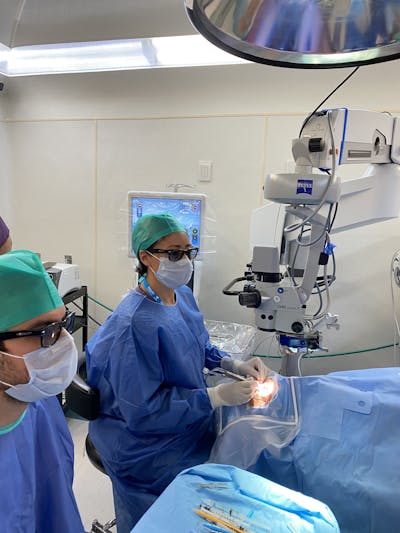




Pivotal hospital visit
Dr. Lorenzo knew that she wanted to be a doctor by age five. That’s how old she was when a beloved aunt, who was a pediatric oncologist, took her on a visit to her workplace.
Seeing children her own age, sitting in hospital beds and bald from chemotherapy, made an indelible impression. Dr. Lorenzo remembers feeling so proud of her aunt for helping these children who were so sick. She remembers feeling that she wanted to do something similar.
Then her aunt did something “amazing.” She pricked her niece’s finger and let her look at her drop of blood under a microscope. “I saw red blood cells and platelets, everything! For me, it was like discovering a whole new world.”That visit cemented a desire to be a doctor that never waned.
She entered medical school at age 17, deciding to specialize in cataract surgery because she loved surgical specialties, she loved the precision of the cataract operation, and she loved how patients regain their vision so fast. The specialty, too, gave her the control she desired over her working life.
Upholding the status quo
Before 2016, she remembers that many patients with diabetes, who came to her for cataract surgery, would complain to her about having been put on insulin. They would say they felt worse, and their eyesight had become worse, since starting insulin.
“I feel bad about saying this now, but back then I just wouldn’t believe them. There are too many factors involved. I would tell them: ‘It’s for your own good. It´s lowering your blood sugar. You must continue taking it.'”
Now she sees the situation differently: insulin may have indeed been lowering the glucose levels in their blood, but where was that glucose going? Was insulin forcibly pushing glucose into delicate cells? Could that action of insulin pushing glucose into cells actually be contributing to an increased risk of patients developing diabetic retinopathy?Other researchers have asked those same questions. In fact, a number of small studies over the last two decades have shown that the risk of diabetic retinopathy increases as insulin is added as a treatment for people with type 2 diabetes.
A 2014 meta-analysis of those studies found a significant relationship between the starting of insulin therapy and an increased risk of diabetic retinopathy. Since these were observational studies and can’t prove cause and effect, researchers concluded that more studies are needed.
Dr. Lorenzo says, while still a hypothesis, this realization of a possible linkage, however, was her “aha” moment.
“Now I understand my patients better. I tell them, “I believe you. And we’re going to eventually get you off insulin. Maybe not right away, but we can do it.”
A family diagnosis, a new insight
Dr. Lorenzo would not be where she is today, an ophthalmologist advocating for the low-carb diet, if not for her father.
In 2016 her father, at age 68, was diagnosed with diabetes. No one in their family had ever had the disease. Her father was never very overweight or seemingly at risk of developing the disease.




Photo by Laura Lorenzo
Then, suddenly he lost about 10 kilos in a couple of weeks. They worried it was cancer. But to their surprise, a blood test found his blood glucose was very high — 300 mg/dL (16 mmol/L). He had become insulin resistant.
He was put on glucose-lowering medications which caused his blood sugar to go much too low. As a result, he lost consciousness twice. He and his doctors struggled with getting a stable balance between the right medications and satisfactory blood glucose levels. The medications caused him digestive upset and he found the list of forbidden foods to be akin to “torture.”
“He became very sad and I was very worried about him. I knew all the complications caused by diabetes and I did not want him to go down that path,” said Dr. Lorenzo.She began doing her own research into how she might help him. That work led to her finding Dr. Jason Fung, Diet Doctor, and the low-carb world.
She ended up communicating with Dr. Fung and she asked if she could come to Toronto to do a clinical rotation with him. Unfamiliar with Canadian winters, she suggested coming in December; Dr. Fung said she better come in May. That was two weeks after her wedding, so she and her husband spent their honeymoon in Toronto while she shadowed Dr. Fung.
“It was wonderful. It gave me the confidence to start using low carb as a legitimate medical treatment.”
She tried the diet herself and even though she was a healthy weight she ended up losing 5 kilos (11 pounds), which have stayed off. “I love how the diet gives me energy and focus.”
Eventually, she convinced him to try. They monitored his glucose levels closely and within one month, his blood sugar was at a normal level and he had completely tapered off all medications.
Now 73, her father says he’s delighted with the outcome. His blood glucose is on average 90 mg/dL ( 5.0 mmol/L) and he is a healthy 175 pounds on his 5’8″ foot frame.
“I feel agile and light and well-fed,” he says. “I only had to forget about carbohydrates and sugars.”
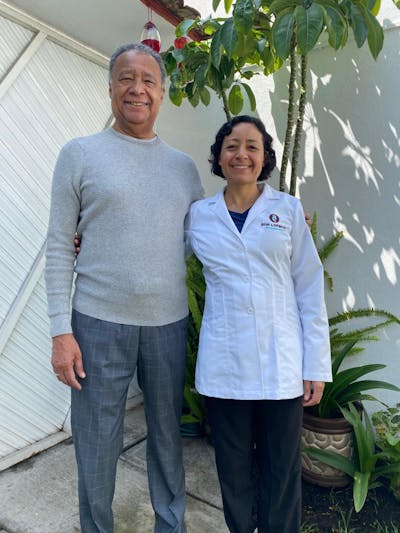




Photo by Laura Lorenzo
Replacing tortillas, tacos, beans, and rice
Granted, eating a low-carb diet in Mexico takes a bit of planning and know-how.
“Mexican food is delicious. It is considered an Intangible Culture Heritage of Humanity by UNESCO. Although it is diverse, it can be very high in carbs,” says Dr. Lorenzo.
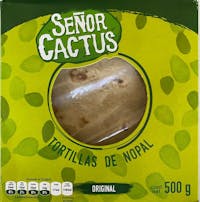



Tortillas are often eaten at every meal. Dr. Lorenzo recommends swapping out corn or wheat tortillas for nopal tortillas, which are made from the prickly pear (nopal) cactus.
While nopal tortillas are still made with some corn flour, they are considerably lower in carbs.
In Dr. Lorenzo’s experience, limiting the number of tortillas best helps to reduce blood sugar.
She recommends removing beans completely and swapping in cauliflower rice for regular rice. For tacos, nopal can be used there, too, or she recommends trying cauliflower tacos, Diet Doctor’s cheese tacos shells, or even iceberg lettuce to replace the taco shell.
“It’s common here to drink fruit juices or sugary drinks at every meal, so I recommend drinking mineral water instead. That one change alone makes a huge difference.”
While patients generally miss their beans and tortillas (tortillas most of all), they’re usually convinced it’s worth it when they start seeing results. “They get motivated and keep up the work,” she says.
“My patients experience progress and that’s when they start getting enthusiasm to keep at it. Their vision improves, they’re losing weight, and they need less medication. If their retinopathy hasn’t been established for a long time, their eyesight can return quickly.”Dr. Lorenzo, who was one of the early joiners of the Diet Doctor Find a Doctor Map, is grateful to Diet Doctor for creating a community of like-minded physicians.
“It makes me feel less alone and it reassures me that what I’m doing is best for my patients, even if I get pushback from other doctors in my community. It makes me hopeful that more doctors will adopt low-carb as a valid treatment.”
She just wishes she could reach more people before it’s too late.
“It just breaks my heart when I see or hear about patients who have lost their sight from retinopathy; none of them knew that at one point it was reversible. I find it so frustrating that I can only help a few of them. I want to reach them all.”
We are happy to help Dr. Lorenzo get this message out. Can you help us, too? Share her inspiring story about preventing diabetic vision loss with a low-carb diet with your family and friends.
—




